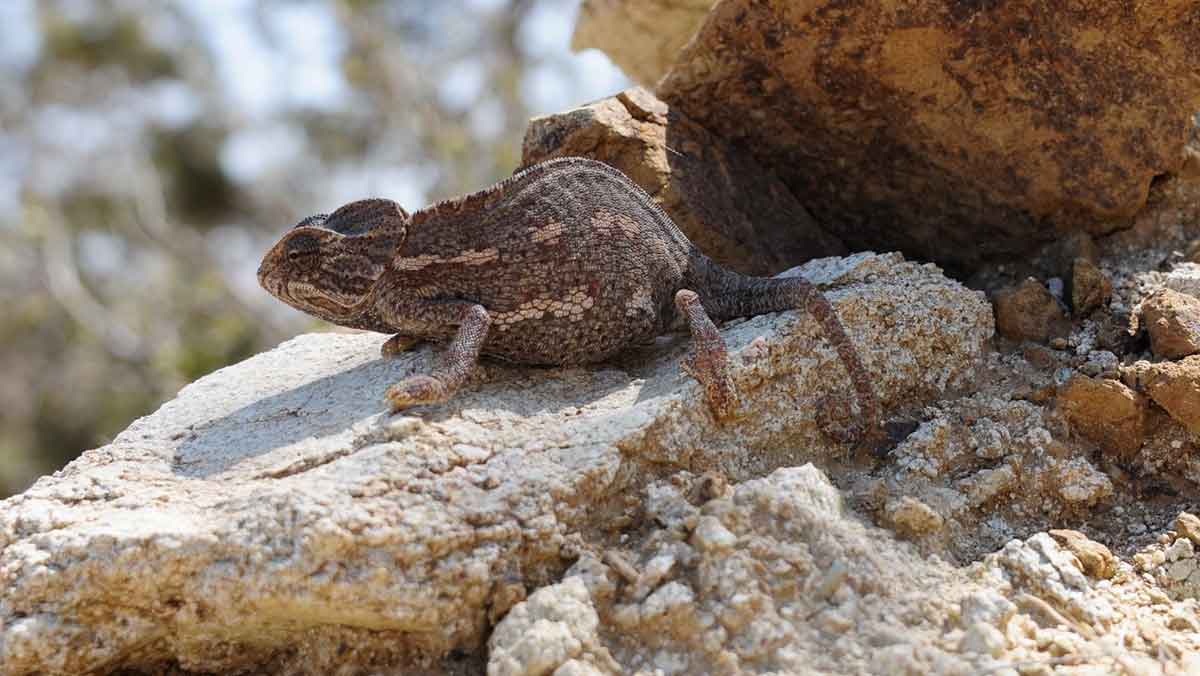The Role of BPAs
A quick look at Aramco’s biodiversity protection areas across the Kingdom

Global May 22, 2023
From Abu Ali to Abha, BPAs play a critical role in maintaining Saudi Arabia’s biodiversity.
Guided by our policies and standards, Aramco’s Biodiversity Protection Area (BPA) program directly contributes toward this year’s theme of “Build Back Biodiversity.” Our BPA program recognizes the exceptional biodiversity value of the Kingdom and currently affords protection to 12 BPAs covering an area of approximately 985 km2.
Shaybah Wildlife Sanctuary
The 637 km2 fenced area of hyper-arid habitat in the Rub’ al-Khali desert (11 km west of the Shaybah Residential and Industrial Complex) continued to support internationally significant wildlife. The perimeter fence helps eliminate key threats at the site (i.e., unregulated vehicle access, grazing, littering, and hunting). Data analysis indicates that the fenced protected area supports a wide array of biodiversity. In addition, three species: Arabian oryx, Sand gazelle and Ostrich were reintroduced into the site in 2016 (because they formerly existed across the Rub’ al-Khali) continue to thrive at Shaybah.
Manifa
Habitat: Gulf coast lowlands
Area: 18 km2
Key species: Cakile arabica, Cheesman’s gerbil, Dhub, Schismus arabicus, Greater flamingo
Each year more than 150 migrating bird species rest and forage on Manifa’s beautiful coastline, sand flats, coastal depressions, open plateaus, saltmarshes and sabkhah, supported by over 41 native plant species. The site also provides habitat for at least six mammals and four reptiles, including Dhub lizards rescued and translocated from neighboring sites that were about to be cleared for development.
Abqaiq Wetlands
Habitat: Wetlands
Area: 2.5 km2
Key species: Dozens of migratory bird species, Arabian toad-headed agama, Arabian red fox, Desert hedgehog, Socotra cormorant
A charming sanctuary of wetlands, sand dunes, and planted trees rests in the western shadow of Abqaiq’s oil processing facilities. Amongst dense thickets of reeds, tertiary treated wastewater tops up a naturally exposed portion of an ancient aquifer, forming a lovely wetland and retreat for more than 34 plant, four mammal and six reptile species, along with perhaps 100 migratory bird species. The site includes the Kingdom’s first two birdwatching hides.
Rahimah Bay
Habitat: Mangrove forest
Area: 64 km2
Key species: Grey mangrove, dozens of fish and shrimp species, Osprey, Greater flamingo
Millions of vertical mangrove roots emerge from the intertidal mud, providing invaluable habitat for dozens of juvenile shrimp and fish species. The site contains an Eco-park with an educational visitors’ center, research labs, and a mangrove boardwalk through the intertidal mangrove and saltmarsh habitats.
The Arabian Gulf coastline features many mangrove-fringed inlets and bays that provide a critical habitat for birds and marine life. These forests also serve as the most significant natural CO2 sink in the Kingdom. With this ecosystem under pressure from development, we are working to preserve and protect this natural resource for future generations.
Accordingly, we have recently completed the development of our first mangrove eco-park in the Kingdom, protecting 64 km2 of marine habitats including mangrove forests, salt marshes and sea grasses — all important nurseries for fish and shrimp. This eco-park will help foster knowledge and appreciation of this fragile ecosystem, and consists of a visitor center, trails, and boardwalks, with various observation and education points. A portion of the park will be designated for research activities. Elsewhere, Aramco has planted over 4.3 million mangrove trees at sites along the Arabian Gulf and Red Sea coasts, with support from thousands of company and community volunteers. Another 2 million mangrove seedlings are currently being planted in the city of Yanbu’.
Medina
Habitat: Southwest Highlands
Area: 23 km2
Key species: Arabian lark, Arabian short-fingered gecko, Arabian spiny mouse, Nubian ibex, Rock hyrax
With its acacia-rich mountains and wadis, Medina shelters at least 39 plant species, eight native mammals, four reptiles, and about 100 bird species. This list includes five endemic species. The site also contains archaeological and cultural value.
Abha
Habitat: Southwest highlands
Area: 49 km2
Key species: Arabian sunbird, Philby’s partridge, Anderson’s rock agama, Crested porcupine
This stunning alpine habitat contains a minimum of 37 plant species, 18 mammals, 61 birds, and six reptiles, including four internationally threatened species, and ten regionally endemic species. This is perhaps the best habitat in the world for the rare Philby’s partridge.
Abu Ali
Habitat: Gulf coast lowlands
Area: 105 km2
Key species: Cheesman’s gerbil, Eurasian curlew, Golden jackal, Schismus arabicus
Designated as an internationally Important Bird Area by Bird Life International, Abu Ali’s coastline, dunes, sandy flats, mangrove swamps, and sabkhah, supports at least 32 native plant species, six mammals, two reptiles, and perhaps over 150 species of migratory birds. At certain times of year, tens of thousands of butterflies can be found in the low-lying vegetation. The company also operates a sea turtle center, rescuing and rehabilitating sick and injured animals and retuning them to the Arabian Gulf. The species most frequently encountered in Saudi Arabia’s coastal waters are the green turtle Chelonia mydas and hawksbill turtle Eretmochelys imbricate.
Caption for top photo: The Medina biodiversity protection area shelters nearly 40 plant species, eight native mammals, four reptiles, and about 100 bird species.




